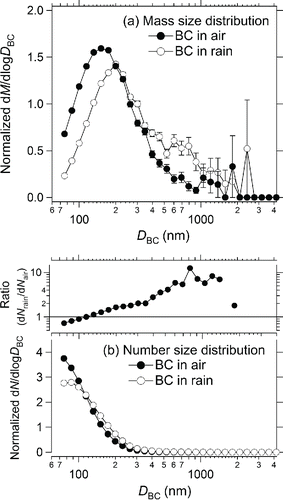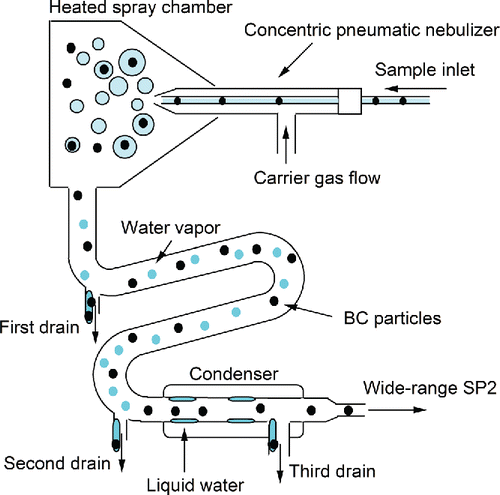Figures & data
Figure 1. Schematic diagram of the wet deposition processes of BC and its extraction into air by a nebulizer: (I) growth of BC-containing particles into cloud droplets; (II) collision of cloud droplets; (III) formation of raindrops by coalescence of cloud droplets; (IV) extraction of BC from liquid water by the nebulizer. The size distributions and chemical composition of non-BC particles extracted by process (IV) are different from those in the air parcels.

Figure 2. Experimental setup for measuring BC particles in rainwater and snow. Air flow rates are given in units of standard temperature and pressure (STP; 273 K and 1013 hPa) cm3 s−1.

Figure 4. (a) Calibration curves of the WR-SP2 for fullerene soot and for extremely non-compact and compact shapes of BC particles. (b) Mass size distributions of BC particles in Tokyo air, determined by using the three different calibration curves. For the size distribution of BC particles with extremely compact shapes, the dM/dlogDBC value for the diameter of 4780 nm (8.74 μg m−3) is not shown. Bars indicate 1σ of a Poisson distribution.

Figure 5. Measured extraction efficiency of the Marin-5, obtained by using polystyrene latex (PSL) spheres and AquaBlack 162 in water. Error bars show standard deviations for repeated measurements. For comparison, the extraction efficiency of an ultrasonic nebulizer (U5000AT) is also shown (Ohata et al. Citation2013).
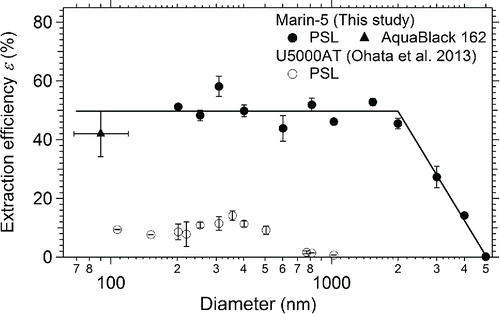
Figure 6. (a) Number and (b) mass size distributions of BC in Cape Hedo rainwater samples (bottom panels). The ratios of the number and mass concentrations of BC in rainwater on two different days are also shown (top). Bars indicate 1σ values.
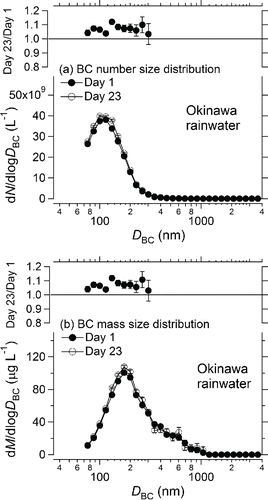
Figure 7. Experimental setup for estimating the extraction efficiency of the pneumatic nebulizer (Marin-5) and the size distribution of the generated droplets of ammonium sulfate (AS) solution. SMPS, scanning mobility particle sizer spectrometer; RH, relative humidity.
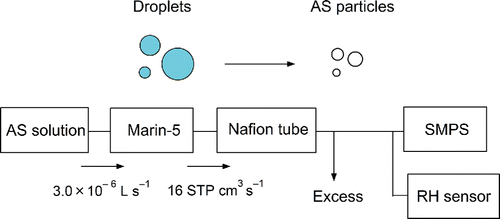
Table 1. Mass concentrations of ammonium sulfate (AS) solutions used to estimate the extraction efficiency of the Marin-5 nebulizer and corresponding count median diameter (CMD) and geometric standard deviation (σgc) values of the AS particles and droplets generated by the nebulizer.
Figure 8. Correlation between the volume of ammonium sulfate (AS) particles extracted by the Marin-5 per second (Vair) and the volume of AS solution fed to the concentric pneumatic nebulizer per second (Vsol). The solid line is the least-squares fitted line.
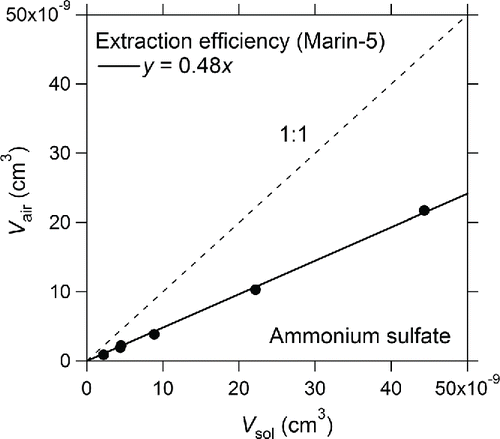
Figure 9. Size distribution of ammonium sulfate (AS) particles for an AS mass concentration of 5.38 mg L−1. The droplet size distribution estimated from the AS size distribution is also shown. The dashed lines show the lognormal fitted size distributions.
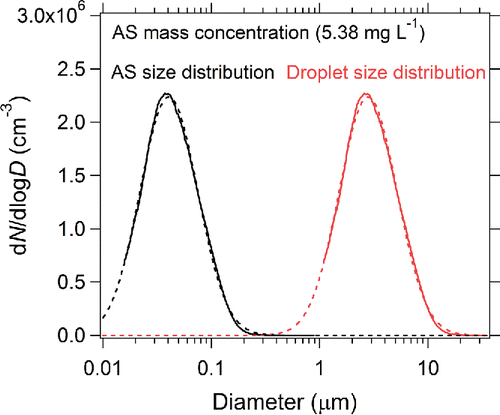
Figure 10. (a, b) Normalized number size distributions of BC particles in AquaBlack 162 (AB-162) samples. (c, d) Same as (a) and (b) but for fullerene soot (FS) samples. Ratios of normalized number concentrations of BC particles in AB-162 and FS samples to reference concentrations at different sizes are also shown, which were normalized by 76 and 115 nm for AB-162 and FS, respectively. The mass concentrations of the reference samples of AB-162 and FS were 8.0 and 18 μg L−1.
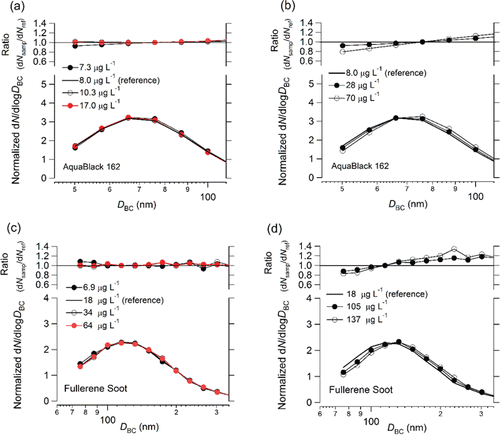
Figure 11. Experimental setup for measuring changes in the size distribution of BC particles during their collection by a particle-into-liquid sampler (PILS).
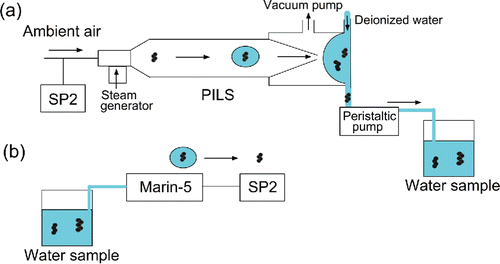
Figure 12. Normalized number size distributions of BC particles in ambient air and those collected by a particle-into-liquid sampler (PILS) in the diameter range 100–400 nm (bottom). The ratio of the normalized number concentration in water (dNPILS) to that in air (dNair) at different sizes is also shown (top). Bars indicate 1σ values.
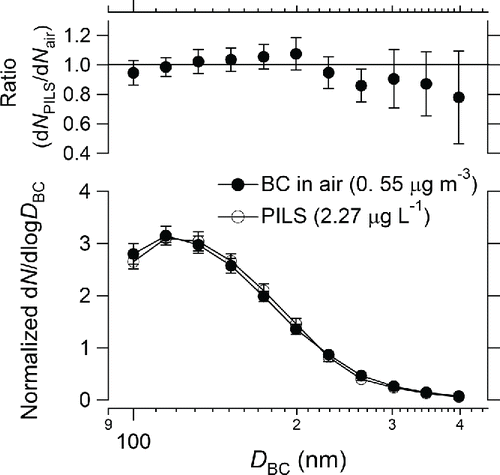
Table 2. Mass concentration, count median diameter (CMD), and geometric standard deviation (σgc) values of BC particles in Tokyo ambient air and the collected water samples on the first and second days.
Figure 13. (a) Normalized mass size distributions of BC in air and rainwater collected in Tokyo on 10 August 2014. (b) Same as (a) but for normalized number size distributions. Ratios of the normalized size distribution in rainwater to that in air are also shown. The ratios are normalized by a diameter of 130 nm. Bars indicate 1σ of a Poisson distribution.
